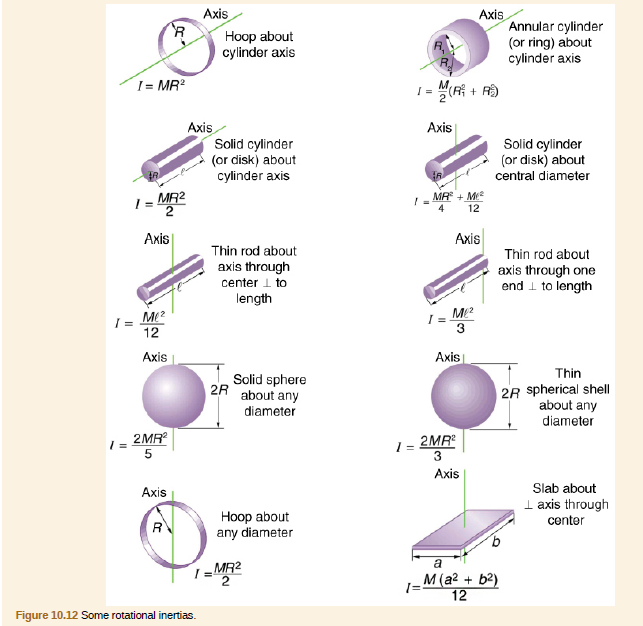Question
In: Chemistry
moment of inertia of a rod
Starting with the formula for the moment of inertia of a rod rotated around an axis through one end perpendicular to its length (I=M ℓ² / 3), prove that the moment of inertia of a rod rotated about an axis through its center perpendicular to its length is I=M ℓ² / 12. You will find the graphics in Figure 10.12 useful in visualizing these rotations.

Solutions
Expert Solution
A moment of inertia represents the body's tendency to resist rotational motion. It is given by the product of mass and square of the distance from the axis of rotation.
I=M R²
The parallel axis theorem states that: the moment of inertia increases when the axis of rotation moves away. It is the sum of moment of inertia through the center of mass and product of group and square of perpendicular distance from the rotation axis and center of the assembly.
I=Ic m+M d²
We know that when the rod rotates about a parallel axis passing through the end of the rod, the moment of inertia is:
I=1/3 M l²
Where M is the mass of the rod and l is the length of the rod.
The distance from the end of the rod to the center is d=l/2.
I=Ic m+M d²
=> Icm=I-M d²
Therefore:
Icm =1/3 Ml²-M(l/2)²
Icm =1/3 Ml²-1/4 Ml²
Icm =1/12 Ml²
Hence proved that moment of inertia of the rod about the axis passing through its center of mass and perpendicular to it is Ml²/12
Related Solutions
We will find the Moment of Inertia Moment and Polar Moment of Inertia of a U...
describe application in real life for moment inertia in ( thin rod) and (hoop or cylindrical...
A 6.0 - m long rod has a mass of 1⁄3kg. Its moment of inertia from...
To calculate moment of inertia
Moment of inertia for equilateral triangle
Two balls connected by a rod as shown in the figure below (Ignore rod’s mass). What is the moment of inertia of the system?
Calculate moment of inertia of disc with remaining portion
Calculate moment of inertia of disc with remaining portion
Derive the moment of inertia, of triatomic linear rotors
How applied mechanics terminologies such as moment, moment of inertia and frictional matters are involved to...
- True or False - Du positive blood is regarded as Rh-negative for transfusion purposes.
- The variance of return on investment A is 144 percent squared while the variance of return...
- Use R studio to do it I need the code, thx. Write your own function, called...
- Design and implement a database for restaurant At the end you will submit a report that...
- The wavelengths of absorption of chromophores in electronic spectra are often influenced by the solvent. For...
- Objective: The purpose of this assignment is to: You understand and can work with C++ arrays,...
- According for FITT recommendations for women who are pregnant, what is the intensity for aerobic activity?...
 DogeShow answered 4 years ago
DogeShow answered 4 years ago